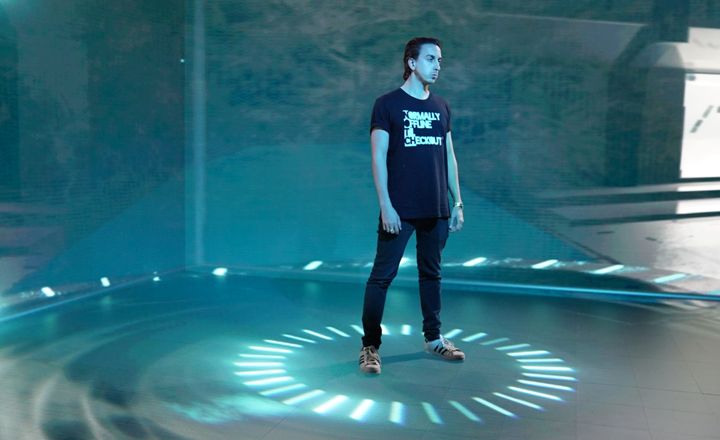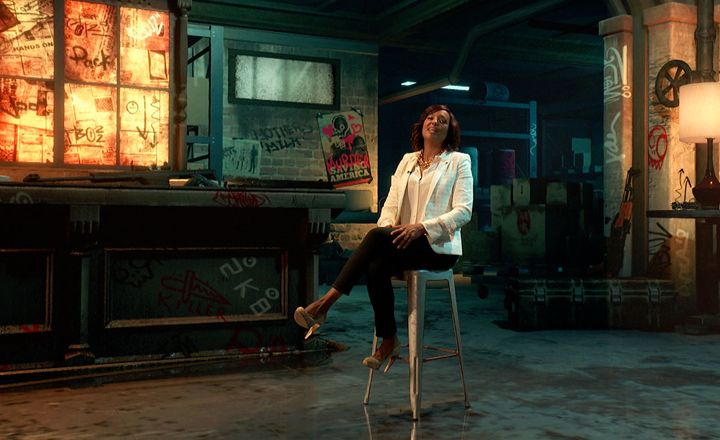Casting shadows from the talent #
Shadows have been a key part of grounding talent in virtual production for many years and are a key consideration in making your Notch content. The approach to doing this alters depending on the type of virtual production you are doing.
In a green screen setup, it is possible to cast shadows on the 3D scene using the Notch Chroma Keyer. This gives more latitude in the type of materials and tones you use in your scene virtual floor.
For LED stages you’re more likely to be using real-world lighting to cast the shadow of your talent on a matte LED floor. Therefore it’s a good idea to make the area where the talent stands less reflective and darker so that the real-world lights and shadows show up on the LED floor panel - and you don’t have ‘reflections’ passing through the shadow. Getting this balance isn’t that easy, so it’s worth experimenting with.

Using real-world lighting to cast a shadow on a matte LED floor
Real or virtual reflections for on-stage talent #
While this is a fairly obvious question, it again impacts the content you create in Notch as it is important for grounding the talent on the stage and creating the illusion.
If you’re doing green screen shoot, then you can utilise the Notch Chroma Key with RT Mirror Reflections.
In LED stages, where you have no masked image of the talent, it is nearly impossible to virtual reflections of the talent. Instead, glossy LED floors can be used effectively to provide real world reflections. Just like with shadows though, it’s important that your floor materials are sympathetic to a reflection; i.e. not already doing hard reflections of the objects behind the talent.

Aggressive & Tigre Lab making effective use of a glossy LED floor to ground the talent in this shoot.
Grounding the talent in challenging setups. #
If you have a bright scene and are unable to ground the talent, try the “rug” or “stool” trick. Add a rug or stool to the area of the stage where the talent stands, this will help ground the talent by obscuring the bright LED floor and create natural shadows when used with physical lighting.